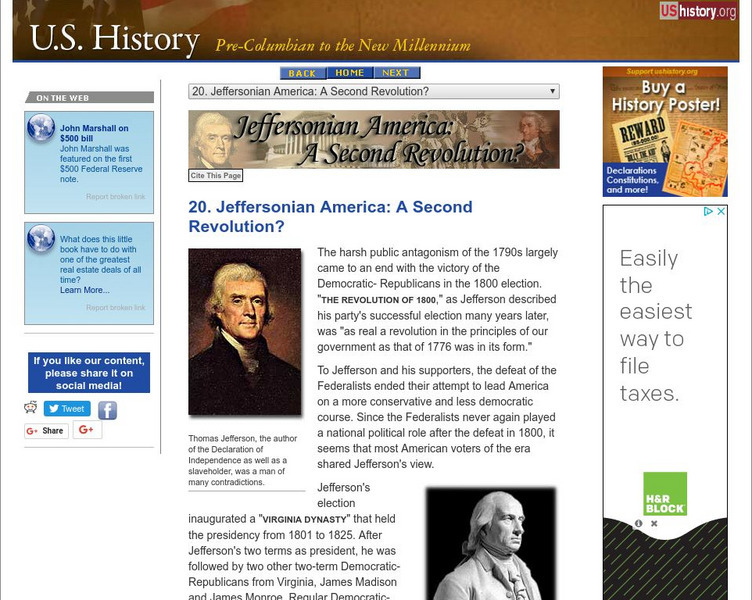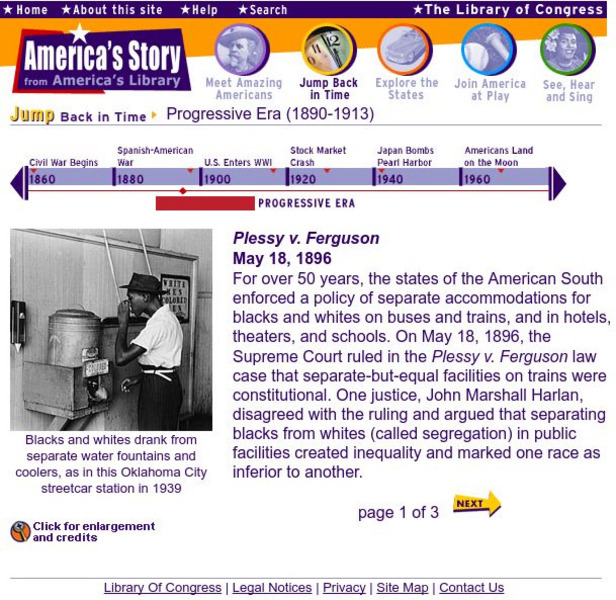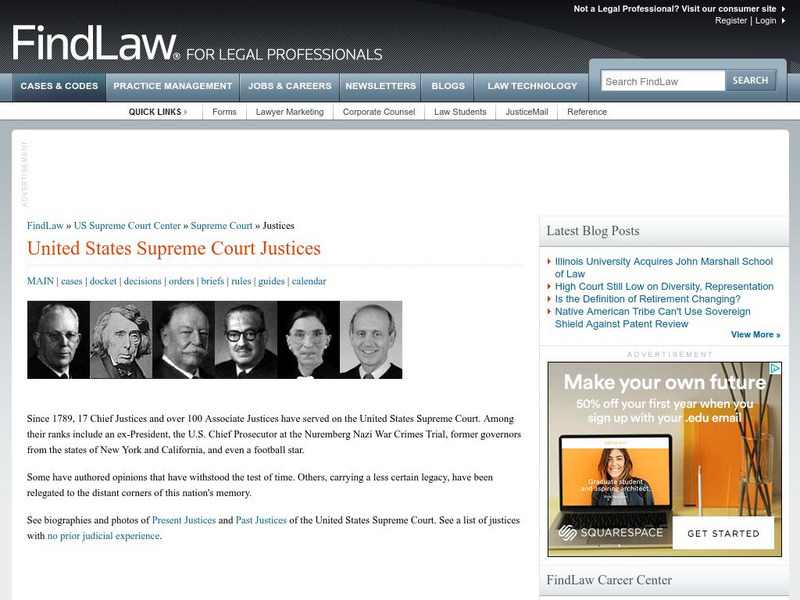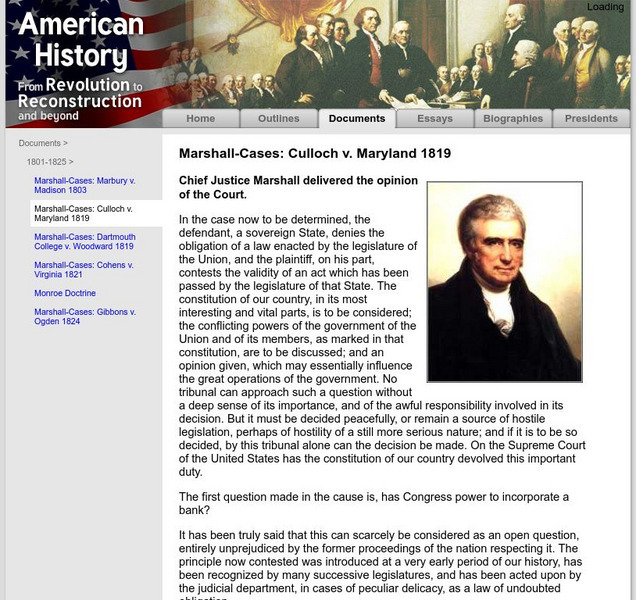National Endowment for the Humanities
Neh: Edsit Ement: John Marshall, Marbury v. Madison, and Judicial Review
In this lesson plan, students will consider "John Marshall, Marbury v. Madison, and Judicial Review-How the Court Became Supreme." The plan includes worksheets and other student materials that can be found under the resource tab.
Georgia Humanities Council and the University of Georgia Press.
New Georgia Encyclopedia: Cherokee Removal
Reveals the story behind the forced removal of the Cherokee Indians from Georgia to Indian Territory in present day Oklahoma.
Tom Richey
Tom richey.net: The Marshall Courts: Revenge of the Federalists [Ppt]
Presents key ideas for examining the impact of Supreme Court decisions under Chief Justice John Marshall on the powers of the federal government. Includes an activity at end of presentation.
Library of Virginia
The Library of Virginia: John Marshall
Presenting different aspects of Marshall's life, this online exhibit includes a look at his education, personality, and his political career.
Constitutional Rights Foundation
Constitutional Rights Foundation: Mc Culloch v. Maryland (1819): John Marshall and the Bank Case [Pdf]
Lesson on Supreme Court Landmark case in which learners analyze the constitutional argument and significance of McCulloch v. Maryland and further analyze and interpret implied constitutional powers of Congress through writing, discussion...
Independence Hall Association
U.s. History: Jeffersonian America: A Second Revolution?
Read about the peaceful "revolution" that occurred in the election of 1800 when the party in power, the Federalists, was defeated in a democratic election by the Democratic-Republicans. See how this showed that the ideals of the new...
Independence Hall Association
U.s. History: A Federalist Stronghold: John Marshall's Supreme Court
John Marshall was the fourth Chief Justice of the Supreme Court, but his decisions, especially in Marbury v Madison, set the influence of the Court for the next many decades. Read about Marshall's decisions and why they were so important.
US Department of State
Biographies of the Secretaries of State: John Marshall (1755 1835)
Biography of Secretary of State John Marshall who was nominated by President John Adams replacing Timothy Pickering. This brief bio discusses Marshall's rise to prominence and his influence on American diplomacy.
University of Virginia
Miller Center at Uva: u.s. Presidents: Thomas Jefferson: Domestic Affairs
Read about Thomas Jefferson's attempts to make a smaller bureaucracy and his problems with the federal courts.
Library of Congress
Loc: America's Story: Plessy v. Ferguson
The decision of the Supreme Court in Plessy v. Ferguson kept black and white people separate in all public areas for many years. To find out what that meant, and to see some actual photographs, visit this page.
PBS
Wnet: Thirteen: The Supreme Court: Landmark Cases: Mc Culloch v. Maryland (1819)
PBS gives an explanation of the Supreme Court case of McCulloch v. Maryland that established a broad interpretation of the powers of the federal government. Opinion delivered by Chief Justice John Marshall.
Thomson Reuters
Find Law: Supreme Court Justices
This site acts as a short introduction to the U.S. Supreme Court Justices. Biographies and photos are available for current and past Justices of the Supreme Court through links on this site. From these links more in-depth bios are...
Other
Landmark Cases: Gibbons v. Ogden (1824)
A complete resource for teachers to use when teaching about this Supreme Court case. There is a background summary, excerpts of opinions and teacher directed activities to use after studying the case.
Scholastic
Scholastic: Role of the Supreme Court
This essay describes the power of the Supreme Court to 'check' the actions of both the President and Congress, with some historic documentation.
Alabama Learning Exchange
Alex: John Marshall: True to His Party?
Students will take part in an inquiry-based lesson in which they will analyze the rulings by John Marshall as Chief Justice of the Supreme Court. After evaluation, they will justify through blogging whether John Marshall held up the...
A&E Television
History.com: How John Marshall Expanded the Power of the Supreme Court
When John Marshall was appointed chief justice of the U.S. Supreme Court in 1801, the nation's highest court occupied a lowly position. There was no Supreme Court Building in the newly completed capital, Washington, D.C., so the six...
Library of Congress
Loc: Biographical Directory of the u.s. Congress: John Marshall
A brief overview of the political life of the first Chief Justice of the U.S. Supreme Court.
University of Groningen
American History: Documents: Mc Culloch v. Maryland
This resource provides a summary of the case of McCulloch v. Maryland along with the majority opinion written by John Marshall.
University of Maryland
University of North Texas: The Great Chief Justice: John C. Marshall
A review of the book The Great Chief Justice: John C. Marshall and the Rule of Law by Charles F. Hobson. Primarily covers Marshall's most important decisions. The reviewer also summarizes the major legal influences which shaped...
Independence Hall Association
U.s. History: The Adams Presidency
John Adams faced opposition within his own administration. See who caused him problems at home, and read about the deteriorating relationship with France.
Illinois Institute of Technology
Oyez Project: Dartmouth College v. Woodward (1819)
This Supreme Court case deals with whether a state government can seize a private university and make it a public one. Contains an abstract of the case and a list of how the justices at that time voted on the case.


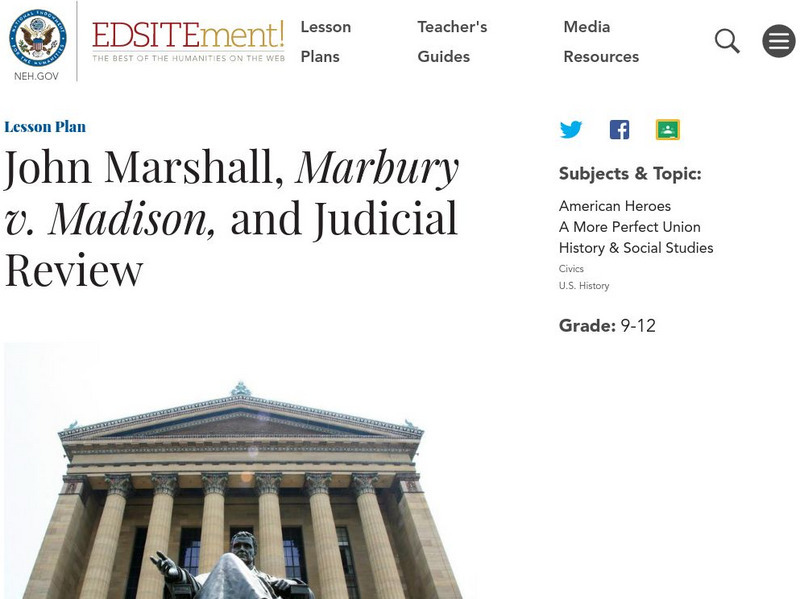

![Tom richey.net: The Marshall Courts: Revenge of the Federalists [Ppt] PPT Tom richey.net: The Marshall Courts: Revenge of the Federalists [Ppt] PPT](https://d15y2dacu3jp90.cloudfront.net/images/attachment_defaults/resource/large/FPO-knovation.png)

